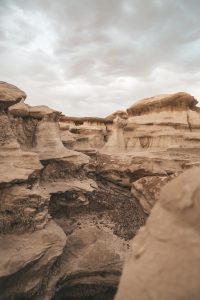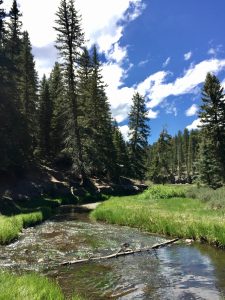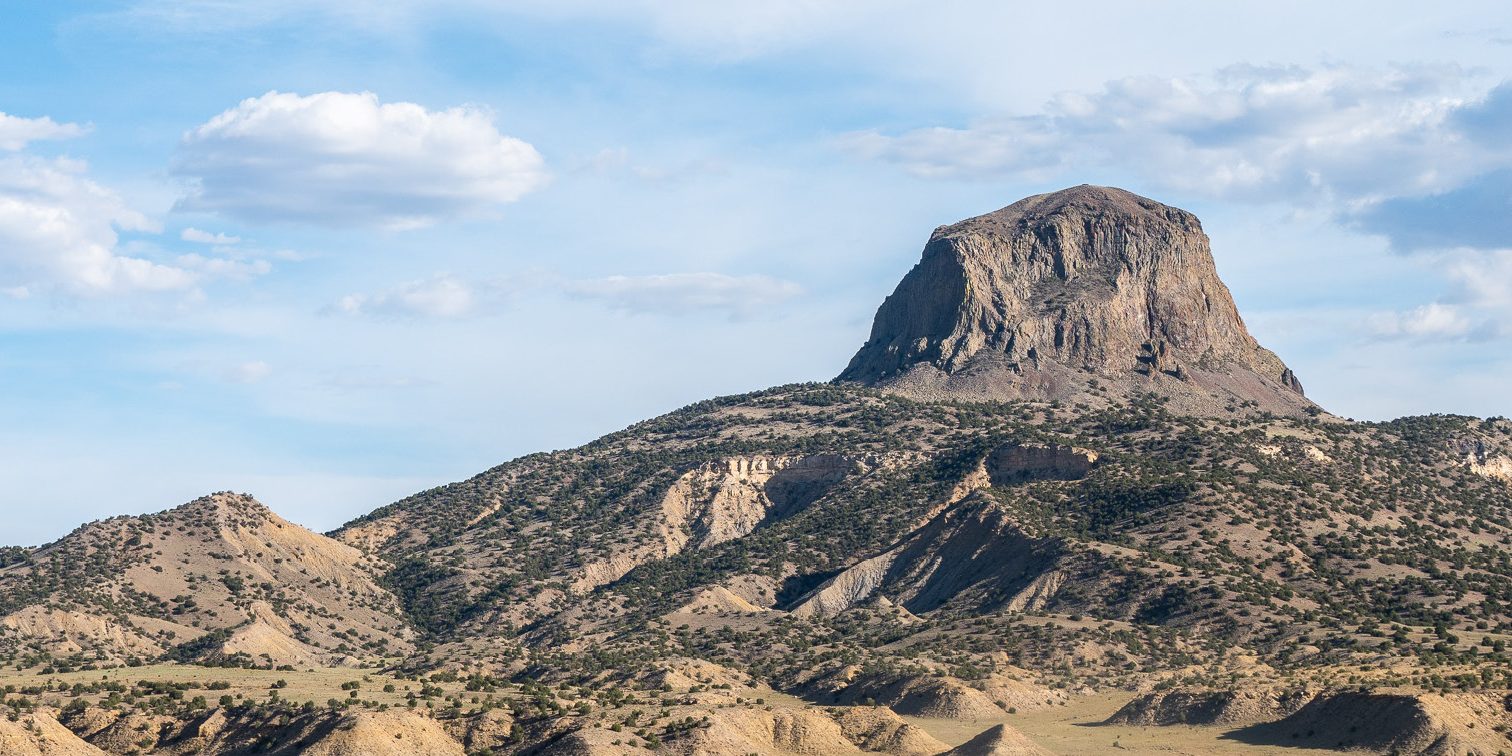It’s no secret that New Mexico wears its quirky reputation as a badge of honor. Beyond the routine UFO and chupacabra chatter, the landscape itself is incredibly distinctive. From bright white sands to endless red rock vistas, New Mexico’s natural diversity is an attraction in and of itself. The Great Plains, southern Rocky Mountains, Colorado Plateau, and Basin and Range Provinces all converge in our state, creating above-average geologic diversity. Let’s explore five of the more intriguing geological sites in New Mexico: some that you may be familiar with, and some that are still a bit obscure.
Bisti/De-Na-Zin Badlands
 If geology could inspire an entire genre, the Bisti Badlands would be science fiction’s muse. Just south of Farmington in the northwestern corner of our state, the Bisti Badlands rise from the desert like overgrown, ashy mushrooms. Eroded shale and sandstone create odd spiky and top-heavy formations called hoodoos that trigger the imagination. Petrified wood is scattered about sporadically, invoking post-apocalyptic vibes.
If geology could inspire an entire genre, the Bisti Badlands would be science fiction’s muse. Just south of Farmington in the northwestern corner of our state, the Bisti Badlands rise from the desert like overgrown, ashy mushrooms. Eroded shale and sandstone create odd spiky and top-heavy formations called hoodoos that trigger the imagination. Petrified wood is scattered about sporadically, invoking post-apocalyptic vibes.
Barren, hot, and remote, exploring the badlands is not for the casual day hiker. Make sure to have GPS location capabilities that don’t rely on cell service and plenty of water. There are no marked trails to the distinct rock formations, so do your research before embarking.
Jemez Springs
 Known for its healing waters, Jemez Springs has been a destination for those seeking the therapy of its thermal pools for centuries. Due to the geological properties of the springs, unique features dot the landscape around the pools that are less than an hour north of Albuquerque nestled in the Santa Fe National Forest:
Known for its healing waters, Jemez Springs has been a destination for those seeking the therapy of its thermal pools for centuries. Due to the geological properties of the springs, unique features dot the landscape around the pools that are less than an hour north of Albuquerque nestled in the Santa Fe National Forest:
- Teakettle Rock juts out of the ground like it was plopped there by a giant looking for a spot of tea.
- The Soda Dam spans more than 300 feet across the Jemez River Valley, forming a natural bridge of 7,000-year-old deposited calcium carbonate and travertine.
- The Kasha-Katuwe Tent Rocks National Monument features white formations that appear conical, much like large teepees clustered together.
- The Goblin Colony Hike in the Jemez Mountains is a remote loop that gives access to ‘goblin-like’ formations named for their volcanic–hoodoo hybrid appearance.
The Santa Rosa Blue Hole
A mini natural wonder, the Santa Rosa Blue Hole is known for its unusually clear visibility and gorgeous sapphire color. A destination for scuba divers, the hole maintains a constant 62-degree temperature even as it renews itself every six hours from the complex system of underground water that connects the Blue Hole to seven sister lakes. With easy access and a short drive for any New Mexican, the Santa Rosa Blue Hole is a refreshing destination any time of year.
White Sands National Park
 It’s hard to truly understand how striking the white sand dunes of southern New Mexico are until you see them for yourself. The largest pure gypsum crystal deposit in the world creates a stark and other-worldly landscape that is constantly in motion. Rare flora and fauna that have adapted to life in the dunes are scattered about the national park that is adjacent to both a U.S. missile testing facility and the Chihuahuan Desert.
It’s hard to truly understand how striking the white sand dunes of southern New Mexico are until you see them for yourself. The largest pure gypsum crystal deposit in the world creates a stark and other-worldly landscape that is constantly in motion. Rare flora and fauna that have adapted to life in the dunes are scattered about the national park that is adjacent to both a U.S. missile testing facility and the Chihuahuan Desert.
Lechuguilla Cave
Formerly known as a smaller, nonremarkable cave in Carlsbad Caverns, everything changed for Lechuguilla Cave in 1986. A group of cavers discovered passages beneath the cave that led to the discovery of Lechuguilla, now revealed to be one of the ten longest caves in the world, and the second deepest limestone cave in the country. Over 145 miles of the cave have been mapped so far with a variety of fantastic geologic deposits and formations included, such as 20-foot-tall gypsum chandeliers. The cave is now closed to the public, with access limited to approved scientific teams and excursions.
This is by no means a comprehensive list of New Mexico’s geological attractions. Honorable mentions include the legend of Shiprock, the volcanic history of Cabezon Peak, or the bizarre aesthetic of the Ah-Shi-Sle-Pah Wilderness Study Area. Happy rock hounding!







